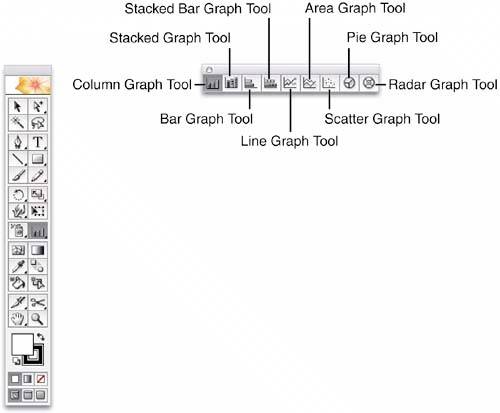UNDERSTANDING THE GRAPH TOOLS
| All the tools shown in Figure 14.17 create various types of graphs to communicate information. When you click and drag with a graph tool, a spreadsheet-type window opens where you can enter the information with which the graph should be created. You can also import graph data from another program. Each type of graph has a specific way that information has to be entered for it. See the Adobe Help Center and Chapter 22, "Speeding Up Illustrator and Data Functionality," of this book for step-by-step instructions on creating each type of graph. Figure 14.17. The Graph tools create different kinds of graphs to display data.
To place a graph on your page, you can click and drag with a Graph tool to create a specific graph area or click on the artboard to enter specific measurements for your graph. Double-click on any of the graph tools to set the options for graph creation:
|
EAN: 2147483647
Pages: 426
